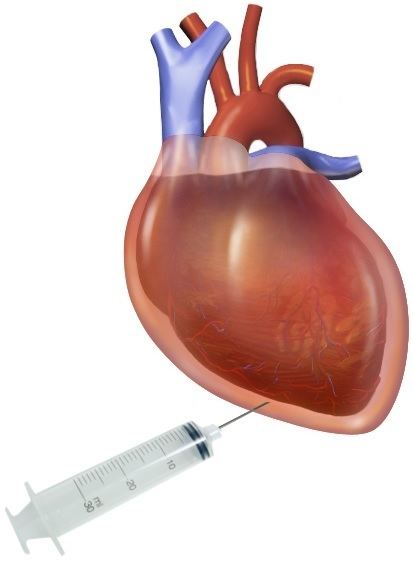ICD-9-CM 37.0 MedlinePlus 003872 | MeSH D020519 | |
 | ||
In medicine, pericardiocentesis is a procedure where fluid is aspirated from the pericardium (the sac enveloping the heart).
Contents
Position
The patient undergoing pericardiocentesis is positioned supine with the head of the bed raised to a 30- to 60-degree angle. This places the heart in proximity to the chest wall for easier insertion of the needle into the pericardial sac. Anatomically, the procedure is carried out under the xiphoid process, up and leftwards.
Process
It is generally done under ultrasound guidance, to minimize complications. There are two locations that pericardiocentesis can be performed without puncturing the lungs.
Indications
Indications include cardiac tamponade, as well as the need to analyze the fluid surrounding the heart. Cardiac tamponade is a condition in which an accumulation of fluid within the pericardium creates excessive pressure, which then prevents the heart from filling normally with blood. This can critically decrease the amount of blood that is pumped from the heart, which can be lethal. The removal of the excess fluid reverses this dangerous process. Examples of the need for fluid analysis would be to differentiate whether a fluid collection within the pericardium is due to an infection, spread of cancer, or possibly an autoimmune condition.
Similar procedures
In cases where longer term drainage is needed, the cardiothoracic surgeon can create a pericardial window. This involves the removal of a section of the pericardium, and the placement of a chest tube.
